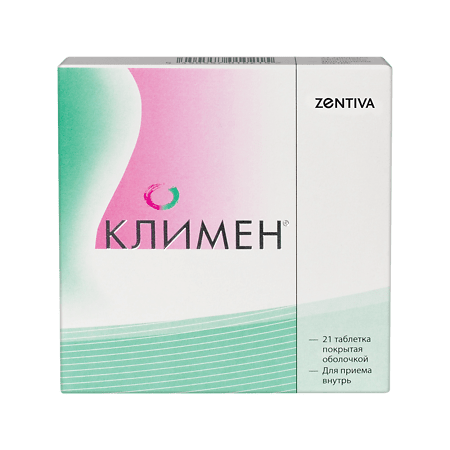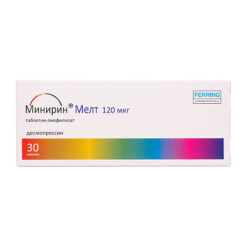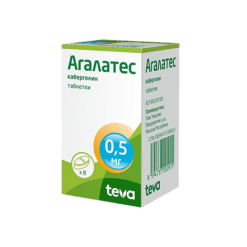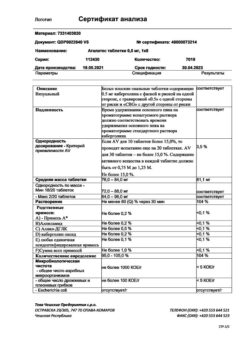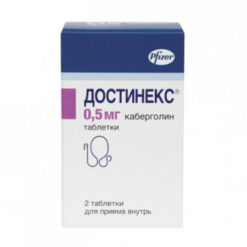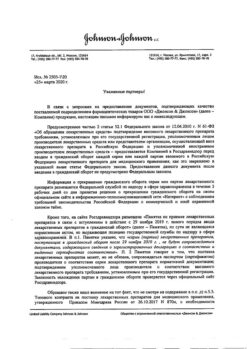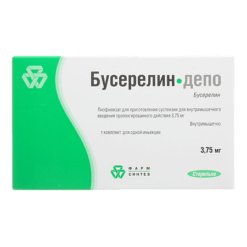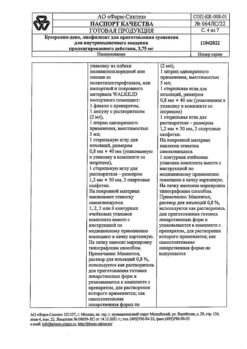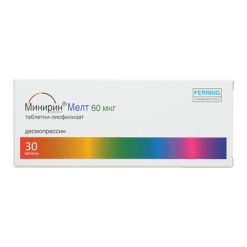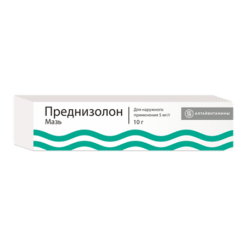No products in the cart.
Climen, 21 pcs.
€1.00
Out of stock
(E-mail when Stock is available)
Description
Climen is a combined product containing estrogen (female sex hormones) – estradiol valerate and antiandrogen (a substance that has the opposite effect to that of male sex hormones) – cyproterone acetate, which has gestagenic (similar to the action of ovarian corpus luteum hormones) properties.
It is a means of hormone replacement therapy to compensate for the lack of sex hormones in women. It reduces or eliminates symptoms of menopausal disorders and has a preventive effect against the development of osteoporosis (bone nutrition disorders accompanied by increased bone fragility associated with changes in hormonal background) and cardiovascular diseases.
Estradiol valerate eliminates or reduces symptoms associated with a decrease in estrogen levels during premenopause, such as hot flashes, sweating, sleep disturbances, irritability, depression (depressed), memory impairment, vascular crises (rapid rise in blood pressure), Atrophic degenerative changes in the skin and mucous membranes (high nail fragility, thinning of the skin and the formation of wrinkles, dry mucous membranes of the urogenital tract), osteoporosis and high bone fragility, changes in lipid metabolism, manifested by increased levels of LDL (low-density lipoproteins), which cause atherosclerotic changes in blood vessels.
In contrast to synthetic estrogens of nonsteroidal structure, estradiol valerate has less effect on protein synthesis function of the liver and weakly stimulates renin formation.
Cyproterone acetate is an anti-androgenic product; due to its gestagenic properties it promotes secretory changes in the proliferating epithelium of the uterus and other target organs, which stops further proliferative processes leading to hyperplasia (overgrowth), in particular the growth of progesterone-deficient hormonal tumors (associated with low progesterone in the body).
As an active anti-androgen, cyproterone acetate reduces androgenization phenomena (appearance of male features in women – coarsening of the voice, male hairiness, etc.). etc.) in patients receiving estrogen replacement therapy in connection with estrogen deficiency, including against the background of ovariectromia (surgical removal of ovaries). It has almost no effect on lipid metabolism, which contributes to a fuller realization of the preventive action of estradiol in relation to cardiovascular disease in the postmenopausal period.
Indications
Indications
menopause in women
prevention of osteoporosis
menstrual irregularities.
Pharmacological effect
Pharmacological effect
Climen is a combined product containing estrogen (female sex hormones) – estradiol valerate and antiandrogen (a substance that has an effect opposite to the effects of male sex hormones) – cyproterone acetate, which has gestagenic (similar to the action of ovarian corpus luteum hormones) properties.
It is a means of hormone replacement therapy that replenishes the deficiency of sex hormones in a woman’s body. It reduces or eliminates the symptoms of menopausal disorders, has a preventive effect against the development of osteoporosis (a malnutrition of bone tissue, accompanied by an increase in its fragility, associated with changes in hormonal levels) and cardiovascular diseases.
Estradiol valerate eliminates or weakens symptoms that appear due to a decrease in estrogen levels in premenopause, such as hot flashes, sweating, sleep disturbances, irritability, depressive (depressed) states, memory impairment, vascular crises (a sharp rise in blood pressure), atrophic degenerative changes in the skin and mucous membranes (high fragility of nails, thinning of the skin and formation of Morshin, dry mucous membranes of the genitourinary tract), osteoporosis and high fragility of bones, changes in lipid metabolism, expressed in increased levels of LDL (low density lipoproteins), which cause atherosclerotic changes in blood vessels.
Unlike synthetic estrogens of a non-steroidal structure, estradiol valerate has a lesser effect on the protein-synthesizing function of the liver and weaker stimulates the formation of renin.
Cyproterone acetate is an antiandrogenic product; due to the presence of gestagenic properties, it promotes secretory changes in the proliferating epithelium of the uterus and other target organs, which stops the further development of proliferative processes leading to the development of hyperplasia (growth), in particular, the growth of hormonal tumors of a progesterone-deficient nature (associated with a low level of progesterone in the body).
Being an active antiandrogen, cyproterone acetate reduces the phenomena of androgenization (the appearance of male characteristics in women – deepening of the voice, male-type hair growth, etc.) in patients receiving estrogen replacement therapy due to estrogen deficiency, including against the background of ovariectromia (surgical removal of the ovaries). It has virtually no effect on lipid metabolism, which contributes to a more complete implementation of the preventive effect of estradiol against cardiovascular diseases during the postmenopausal period.
Special instructions
Special instructions
Clymene is not used for contraception.
If contraception is necessary, non-hormonal methods should be used (with the exception of calendar and temperature methods). If pregnancy is suspected, you should stop taking the tablets until pregnancy has been ruled out.
If any of the following conditions or risk factors are present or worsening, the individual risk-benefit ratio of treatment should be assessed before starting or continuing HRT.
Venous thromboembolism
A number of controlled randomized and also epidemiological studies have revealed an increased relative risk of developing venous thromboembolism (VTE) during HRT, i.e. Deep vein thrombosis or pulmonary embolism. Therefore, when prescribing HRT to women with risk factors for VTE, the risk-benefit ratio of treatment should be carefully weighed and discussed with the patient.
Risk factors for developing VTE include individual and family history (the presence of VTE in first-degree relatives at a relatively young age may indicate a genetic predisposition) and severe obesity. The risk of VTE also increases with age. The possible role of varicose veins in the development of VTE remains controversial.
The risk of VTE may temporarily increase with prolonged immobilization, “major” elective and trauma surgeries, or major trauma. Depending on the cause or duration of immobilization, the question of the advisability of temporarily stopping HRT should be decided.
Treatment should be stopped immediately if symptoms of thrombotic disorders appear or if their occurrence is suspected.
Arterial thromboembolism
Randomized controlled trials with long-term use of combined conjugated estrogens and medroxyprogesterone acetate did not provide evidence of a beneficial effect on the cardiovascular system. In large-scale clinical trials of this compound, a possible increased risk of coronary disease was identified in the first year of use. An increased risk of stroke was also found. To date, no long-term randomized controlled trials have been conducted with other HRT drugs to identify beneficial effects on cardiovascular morbidity and mortality. It is therefore unknown whether this increased risk extends to HRT preparations containing other types of estrogens and progestogens.
Endometrial cancer
With long-term estrogen monotherapy, the risk of developing endometrial hyperplasia or carcinoma increases. Studies have confirmed that the addition of gestagens reduces the risk of endometrial hyperplasia and cancer.
Breast cancer
Clinical trial data and observational studies have found an increase in the relative risk of developing breast cancer in women using HRT for several years. This may be due to earlier diagnosis, the biological effects of HRT, or a combination of both. The relative risk increases with the duration of treatment and may increase even more when estrogens are combined with progestogens. This increase is comparable to the increase in the risk of breast cancer in women with each year of delay in the onset of natural menopause, as well as with obesity and alcohol abuse. The increased risk gradually decreases to normal levels over the first few years after stopping HRT.
According to most studies, breast cancer detected in women taking HRT is usually more differentiated than in women not taking it.
HRT increases mammographic breast density, which in some cases may have a negative effect on X-ray detection of breast cancer.
Liver tumor
During the use of sex steroids, which include drugs for HRT, in rare cases benign, and even more rarely, malignant liver tumors were observed. In some cases, these tumors have resulted in life-threatening intra-abdominal bleeding. If there is pain in the upper abdomen, an enlarged liver, or signs of intra-abdominal bleeding, the differential diagnosis should take into account the possibility of a liver tumor.
Gallstone disease
It is known that estrogens increase the lithogenicity of bile. Some women are predisposed to developing gallstones when treated with estrogen.
Other states
Treatment should be stopped immediately if migraine-like or frequent and unusually severe headaches appear for the first time, as well as if other symptoms appear – possible precursors of a thrombotic stroke of the brain.
The relationship between HRT and the development of clinically significant arterial hypertension has not been established. A slight increase in blood pressure has been described in women taking HRT; clinically significant increases are rare. However, in some cases, if persistent clinically significant arterial hypertension develops while taking HRT, discontinuation of HRT may be considered.
For mild liver dysfunction, including various forms of hyperbilirubinemia, such as Dubin-Johnson syndrome or Rotor syndrome, medical supervision is necessary, as well as periodic liver function tests. If liver function tests worsen, HRT should be discontinued.
If cholestatic jaundice or cholestatic pruritus, observed for the first time during pregnancy or previous treatment with sex steroid hormones, recurs, HRT should be stopped immediately.
Special monitoring is required for women with moderately elevated triglyceride levels. In such cases, the use of HRT may cause a further increase in the level of triglycerides in the blood, which increases the risk of acute pancreatitis.
Although HRT may affect peripheral insulin resistance and glucose tolerance, there is usually no need to change the treatment regimen of diabetic patients when undergoing HRT. However, women with diabetes should be monitored when undergoing HRT.
Some patients under the influence of HRT may develop undesirable manifestations of estrogen stimulation, such as abnormal uterine bleeding. Frequent or persistent pathological uterine bleeding during treatment is an indication for endometrial examination.
If treatment for irregular menstrual cycles does not produce results, an examination should be performed to exclude an organic disease.
Under the influence of estrogens, uterine fibroids can increase in size. In this case, treatment should be stopped.
It is recommended to discontinue treatment if endometriosis relapses during HRT. If prolactinoma is suspected, this disease should be excluded before starting treatment.
In some cases, chloasma may occur, especially in women with a history of chloasma during pregnancy. During HRT, women prone to chloasma should avoid prolonged exposure to the sun or ultraviolet radiation.
The following conditions may occur or be aggravated by HRT. Although their relationship with HRT has not been proven, women with these conditions should be under medical supervision when undergoing HRT: epilepsy; benign breast tumor; bronchial asthma; migraine; porphyria; otosclerosis; systemic lupus erythematosus, chorea minor.
Medical examination and consultation
Before starting or resuming HRT, a woman is recommended to undergo a thorough general medical and gynecological examination (including examination of the mammary glands and cytological examination of cervical mucus) and exclude pregnancy. In addition, disorders of the blood coagulation system should be excluded. Control examinations should be carried out periodically.
Impact on laboratory results
Taking sex steroids can affect the biochemical parameters of the liver, thyroid gland, adrenal glands and kidneys, the plasma content of transport proteins, such as corticosteroid binding globulin and lipid/lipoprotsin fractions, indicators of carbohydrate metabolism, coagulation and fibrinolysis.
Impact on the ability to drive vehicles and operate machinery
No effect.
Active ingredient
Active ingredient
Cyproterone, Estradiol
Composition
Composition
1 white dragee contains:
Active ingredient:
estradiol valerate 2 mg;
Excipients:
lactose monohydrate;
corn starch;
povidone 25000;
talc;
magnesium stearate;
sucrose;
povidone 700000 (K700);
macrogol 6000;
calcium carbonate;
wax.
1 pink dragee contains:
Active ingredients:
estradiol valerate 2 mg;
cyproterone acetate 1 mg;
Excipients:
lactose monohydrate,
corn starch,
povidone 25000 (K25),
talc,
magnesium stearate,
sucrose,
povidone 700000 (K700),
macrogol 6000,
calcium carbonate,
glycerol 85%,
titanium dioxide,
iron oxide red,
iron oxide yellow,
wax.
Contraindications
Contraindications
thrombophlebitis
acute and chronic liver diseases
liver tumor
arterial hypertension.
Side Effects
Side Effects
From the reproductive system and mammary glands: changes in the frequency and intensity of uterine bleeding, breakthrough bleeding, intermenstrual bleeding (usually weakened during therapy), dysmenorrhea, changes in vaginal discharge, a condition similar to premenstrual syndrome; tenderness, tension and/or enlargement of the mammary glands.
From the gastrointestinal tract: dyspepsia, bloating, nausea, vomiting, abdominal pain, relapse of cholestatic jaundice
From the skin and subcutaneous tissue: skin rash, itching, chloasma, erythema nodosum
From the central nervous system: headache, migraine, dizziness, anxiety or depressive symptoms, increased fatigue
Other: rapid heartbeat, edema, increased blood pressure, venous thrombosis and thromboembolism, muscle cramps, changes in body weight, changes in libido, visual disturbances, intolerance to contact lenses, allergic reactions
Interaction
Interaction
When starting HRT, you must stop using hormonal contraceptives. If necessary, the patient should be advised to use non-hormonal contraceptives.
Long-term treatment with drugs that induce liver enzymes (for example, some anticonvulsants and antimicrobial drugs) may increase the clearance of sex hormones and reduce their clinical effectiveness. A similar property to induce liver enzymes has been found in hydantoins, barbiturates, primidone, carbamazepine and rifampicin, and the presence of this feature is also suggested in oxcarbazepine, topiramate, felbamate and griseofulvin. Maximum enzyme induction is usually observed no earlier than 2-3 weeks, but it may then persist for at least 4 weeks after discontinuation of the drug.
In rare cases, during concomitant use of certain antibiotics (for example, penicillin and tetracycline groups), a decrease in estradiol levels was observed.
Substances that are highly conjugated (for example, paracetamol) may increase the bioavailability of estradiol due to competitive inhibition of the conjugation system during absorption.
Due to the effect of HRT on glucose tolerance, the need for oral antidiabetic agents or insulin may change in some cases.
Interaction with alcohol
Excessive alcohol consumption during HRT may increase circulating estradiol levels.
Overdose
Overdose
Symptoms that may occur in case of overdose: nausea, vomiting, vaginal bleeding.
Treatment: there is no specific antidote, treatment is symptomatic.
Storage conditions
Storage conditions
Store in places out of the reach of children. Under normal conditions.
Shelf life
Shelf life
5 years
Manufacturer
Manufacturer
Delpharm Lille S.a.S., France
Additional information
| Shelf life | 5 years |
|---|---|
| Conditions of storage | Keep out of reach of children. Under normal conditions. |
| Manufacturer | Delpharm Lille S.a.S., France |
| Medication form | pills |
| Brand | Delpharm Lille S.a.S. |
Related products
Buy Climen, 21 pcs. with delivery to USA, UK, Europe and over 120 other countries.

